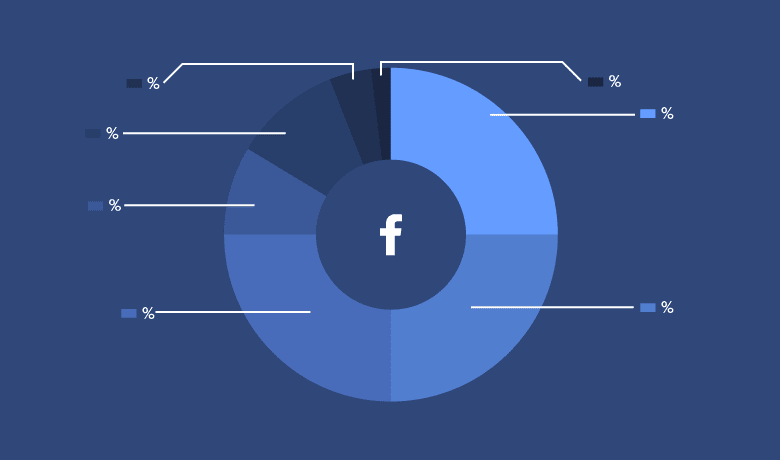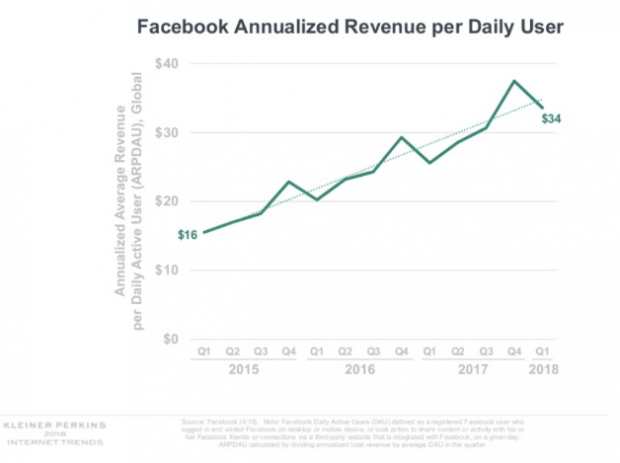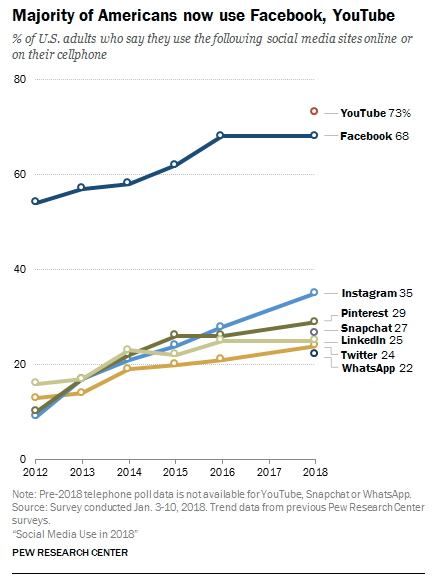Here’s the most impressive Facebook statistics out there: 2.23 billion people use the platform every month.
It’s a safe bet that your followers are utilizing Facebook—and that your opponents are utilizing it too.
However, things get complicated when it comes to staying on top of the trends (not to mention algorithm changes). Be sure your Facebook strategy is as effective as it should be.
These 2019 Facebook statistics for the enterprise will let you know what’s normal, and what’s next.
General Facebook statistics
Facebook continues to be the world’s largest social media platform, however, given recent scandals, the behemoth has been making course corrections. With its renewed concentrate on meaningful interactions between users, what are the numbers displaying?
1. Facebook.com just dropped to the world’s third most-visited website
According to both Alexa and SimilarWeb, YouTube just replaced Facebook as the second-most common site, globally. (After, of course, Google.)
But a decline in Facebook’s site visits isn’t that surprising, given the broader shift towards mobile, and mobile apps specifically. Facebook continues to be the world’s most popular search term.
2. Facebook Messenger is the top mobile app by a number of downloads
And the main Facebook app is second on the listing. The dominance of mobile means entrepreneurs should plan for mobile-first content.
(If you were wondering: WhatsApp is third and Instagram is fifth.)
3. Facebook’s revenue per user has doubled in 3 years
Facebook’s concentrate on meaningful connection has driven rising user engagement, which in turn drives monetization for the platform.
What does that look like it? Facebook made $13.2 billion in income in the first quarter of 2018, a 42 % increase, year over year.
4. Facebook removed 583 million fake accounts in the first three months of 2018
The drive towards accountability is top of mind for the platform. Entrepreneurs need to be aware of new transparency requirements, including the truth that any adverts a Page runs are now easily visible to users.
Weeding out the scammy, spammy and fake should mean more room for authentic and related brands.
Facebook user statistics
Who is utilizing Facebook? The brief answer is almost everybody. But it pays to keep an eye on the platform’s shifting popularity among demographics.
5. 68% of Americans use Facebook
Facebook is the best choice for reaching the broadest audience. Compare that to the 35 % of Americans utilizing Instagram, 29 % utilizing Pinterest, and 24 % utilizing Twitter.
Global penetration, meanwhile, is at 22.9 % and rising.
6. Only half of American teens use Facebook
That’s a notable drop from 3 years in the past when the Pew Research Center’s previous survey reported that 71 % of American teenagers were utilizing Facebook. The highest 3 platforms for teenagers are now YouTube, Instagram, and Snapchat.
Note that teenagers from lower-income households are more likely to use Fb than their wealthier friends. And globally, only 7% of Facebook users are aged 13 to 17.
7. 35% of Facebook’s ad audience is under 25
Do not believe the rumors that Facebook is not cool.
Okay, we can’t speak to its coolness. But the numbers show that young adults are definitely still utilizing it. And a full 30 % of its advert audience is aged 25 to 34.
8. The number of American Facebook users aged 65+ has doubled to 41%
In 2012, just 20 % of Americans in that age bracket used Facebook.
9. Roughly 10 percent of Facebook users are American
With an advertising audience of 210 million customers, America is the second-largest population on Facebook after India (at 270 million).
Rounding out the highest five: Brazil, Indonesia, and Mexico.
There’s a whole wide world out there, so consider tapping into it.
10. 1.1 billion Facebook users speak English
That leaves the other half utilizing the platform in over 100 different languages.
The second most popular language on Facebook is Spanish, at 310 million, followed by Indonesian at 170 million, and Arabic and Portuguese, at 150 million.
Facebook usage statistics
Usage metrics like the frequency and size of visits to Facebook are necessary, as they speak to both the size of a potential audience as well as the amount of attention available for messaging.
That said, Facebook’s move towards improving person experience means that hard-to-measure intangibles like ‘trust’ and ‘meaning’ suddenly matter a lot more.
How is Facebook usage holding up in the age of transparency?
11. 66% of monthly Facebook users use it daily
Worldwide, 1.47 billion people use every day. Meanwhile, 74 % of American Facebook users visit day by day, with only over half of these checking in multiple times per day. This type of frequency speaks to the importance of a consistent posting schedule for your Facebook marketing strategy.
12. Americans spend 58 minutes per day on Facebook
That is according to SimilarWeb, who measured the time US Android users spend in apps. (Since 77 % of global mobile users own Androids, while only 18.9 % use Apple, this data seems related.) Second place for app usage went to Instagram, at 53 minutes.
This appears to be a rise from the data Facebook itself launched in 2016, saying that customers averaged 50 minutes per day in Instagram, Messenger and Facebook mixed.
13. Each visit to Facebook lasts 10 or 12 minutes
According to Alexa and SimilarWeb’s global site ranking, customers check in for relatively short amounts of time. You just have a few seconds to grab attention while they scroll.
On the plus side, more visits mean more space in the newsfeed for adverts.
14. 88% of Facebook users are accessing via mobile device
And 95 % of Facebook visits are made on mobile and tablets. Only 31.8 % of visits are made on computers or laptops.
Optimizing your content for mobile is non-negotiable.
15. 200 million people are members of meaningful Facebook Groups
This number has doubled in the final year, supporting Facebook’s five-year purpose of 1 billion meaningful Group members. (There are already 1 billion Group members, however, ‘meaningful’ Groups are communities that become a key part of a user’s experience.)
Now that Facebook’s algorithm prioritizes meaningful interactions between friends, family, and communities (over brands, as an example), Groups are a chance to gather like-minded people together.
16. 43 % of Americans get their news from Facebook
This makes Facebook the best social media platform for news, with second-place YouTube trailing at 21 %.
But 57% of Americans who get their news on social media say they believe that news is largely inaccurate. Even among the individuals who prefer to get their news on social media, 42 % say that news is, again, largely inaccurate.
Whether you are a publishing brand or a content marketer, consider your popularity as an authority in your area. Growing your audience’s confidence on this platform will help you stand out from the crowd.



